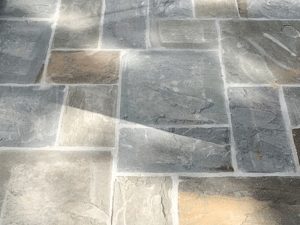Benefits of Staining Brick
When it comes to modifying the color of brickwork, many people are unaware of the option to stain the bricks. Although it might not be familiar to many designers and property owners, staining brickwork is a well-accepted practice in the brick industry, with its use dating back to at least 1960. It is a viable, time-tested, and practical solution for changing the color of brick or brick-and-mortar surfaces while maintaining the appearance of natural or unaltered brickwork.
Staining brickwork has been employed in a variety of circumstances. It is often used to correct brickwork where multiple brick colors were not properly blended, resulting in a patchwork appearance. It can match brickwork constructed from different production runs or brickwork installed in building additions. Staining can blend new brickwork with existing structures seamlessly, covering surface imperfections such as chips, lime pops, or pyrite pops, and repairing damage caused by improper cleaning. Moreover, staining can update existing brickwork to change aesthetics while preserving a natural brick appearance. It can also provide an exact color match when a custom color cannot be achieved through the manufacturing process. Staining can be applied to both brick units and mortar joints to achieve a consistent color throughout the facade, resembling painted brickwork, or it can modify only the mortar joints to match the color of surrounding joints.
Brick staining avoids many of the physically and economically impractical situations associated with removing and replacing brick, especially if the brickwork is well-constructed and only the color is an issue. These situations include the scheduling, time, expense, and cleaning associated with demolition and reconstruction. Staining individual bricks allows the existing mortar to remain in place, avoiding the possibility of mismatching the color of fresh mortar with the existing mortar color. For portions of brickwork with different joint colors due to mortar mix selection and workmanship issues, a brick stain can be applied to the mortar alone to correct this condition.
The process of brick staining involves the application of specific ceramic stains and pigments formulated for brick and mortar. Trained and experienced professionals employed by reputable brick manufacturers or specialized brick staining contractors apply the staining materials to the exposed surface of the brickwork, following the recommendations of the stain material manufacturer. The stain permeates the porous surface of the brickwork, resulting in a colorfast, durable finish capable of withstanding North America’s varied climate conditions, from hot, humid, and high precipitation environments to freezing weather. Properly applied brick stains require no additional maintenance and do not affect the structural integrity of the brick units or mortar joints.
Historically, there have been no formal technical resource ASTM Standards related to stain materials or their application. The process of formulating and applying masonry stains is proprietary and varies among practitioners. It is critical to ensure that the methods and materials used are appropriate and durable for the climate where the project is located. Therefore, it is recommended that brick staining contractors validate their experience by providing references of several successful brick stain projects, including photos and addresses. Most stain manufacturers also provide a warranty for their products.
Whether used to achieve an aesthetic change or correct color differences, brick staining has been a successful solution for many decades. It results in a durable, colorfast finish that maintains the minimal maintenance associated with traditional brickwork. Therefore, brick staining should be given serious consideration for anyone looking to modify the color of their brickwork.

